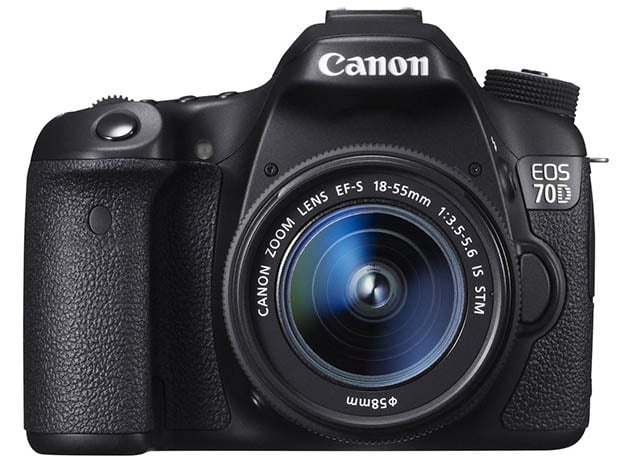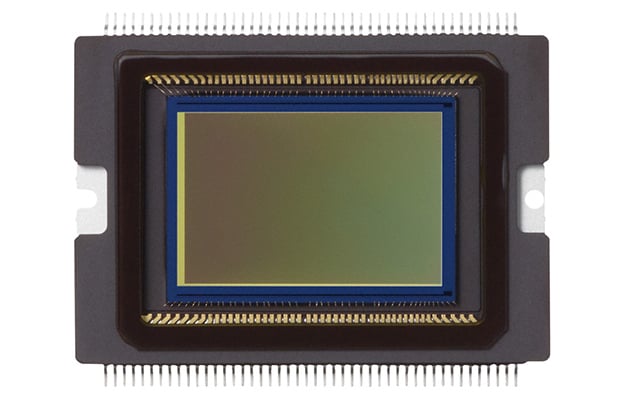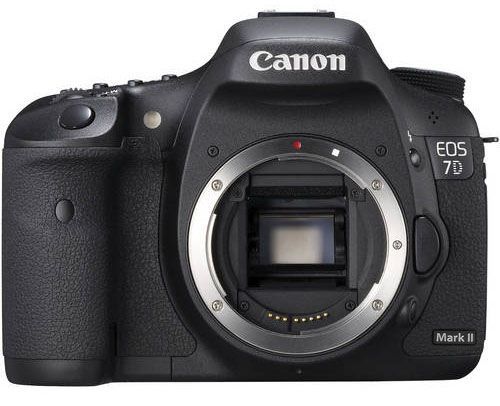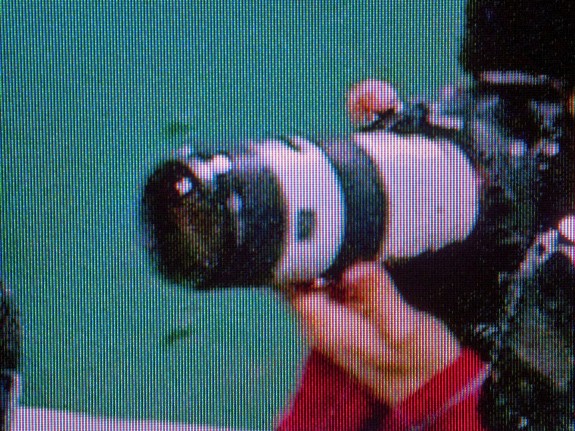
In the Iron Man movies, billionaire Tony Stark developed exoskeleton
suits to gain superhero prowess, and refined every generation of his
armor with slight upgrades. Up to Mk 7 of his suit, the changes had
always been slight and incremental, and in many ways it is the same
story with the Canon EOS 70D – the Mk 7 of a successful and evolving EOS
DSLR line from the billion-dollar business.
So how does the new tech compare against the EOS 60D? Looking at the
brochure it is like another version of the Volkswagen Golf – every
generation gains more buttons and dials, more screens, more features,
more efficiency and more speed.
With all the exciting new large sensors mirrorless cameras and premium
compacts being launched, reviewing the Canon EOS 70D now is like taking
the Iron Man’s Mk 7 suit out for a date instead of hanging out with the
beautiful Pepper Potts. But then, there will always be guys out there
who’d rather hang out with Tony’s high-tech suit than having dinner with
his sultry assistant, so this review is just for you!
With the EOS 70D, you have a couple more megapixels at 20MP,
increased sensitivity of 1 stop, and slightly increased frames per
second at 7fps. It gets more exciting though – the more significant
upgrades include a big bump in the AF system (19 points up from 9
points), a touch-screen articulated LCD, built-in Wi-Fi and the much
touted ‘Dual Pixel CMOS AF’ technology which promises faster phase
detection autofocus.

Here’s a quick run-down on the key features of the new EOS 70D:
- 20.2MP APS-C sensor
- DIGIC 5+ image processor
- ISO 100-12800 standard (ISO 25600 expanded)
- 7fps continuous shooting
- 19-point AF system
- Dual-Pixel CMOS AF
- ‘Silent’ shutter mode
- AF micro-adjustment (Yay it’s back!)
- 1080p 30fps video recording
- 3” articulated touchscreen LCD (1040k dot)
- Integrated Wi-Fi
Body Design and Built Quality
The EOS 70D follows a logical extension to Canon’s double-digit DSLR
line-up, so you will feel right at home if you have used the earlier
generation cameras. The top deck features dedicated buttons for changing
the AF, drive mode, ISO speeds and metering patterns. A new addition is
the dedicated focus area expansion control located between the front
dial and shutter release button. With 19-points (up from the 9 points of
its predecessor), the button lets you access the options of the EOS
70D’s sophisticated AF system.

The mode selection dial sits to the left of the top panel, which has
been updated with a central locking button to prevent accidental shifts
of modes, and it now rotates 360 degrees. The automated scene modes have
been consolidated into a SCN position, freeing up a lot of clutter from
the dial. Like most new EOS cameras, the power switch is now located at
the mode dial as well.
Located at the back of the camera is the fully articulated LCD panel
that packs more flexibility than a Chinese contortionist in a barrel,
allowing you to compose your images from virtually any angle for
creative perspectives. It seemed like a marketing gimmick, but I
realized while shooting that a handful of my images would not been
possible or easy without it. With a generous 3” real estate and 104k
resolution, the images just seem to pop off the brilliant (pun intended)
screen. That the display is clearly visible even in bright daylight
really helps in shooting fast.

But an articulating screen is not unique to the EOS 70D – numerous
cameras already have that, including its predecessor. It is the
successful integration of the articulating screen, high resolution
glare-free display, quick control screen and touch screen function that
make the EOS 70D such a joy to use. You can change all the key settings
very quickly and easily through the well-designed menu display, and that
really lets you work fast in the field. The touch sensitive screen also
lets you select focus points during video recording or in Live View
mode by tapping on the screen to select focus area, which lets you
simulate pull-focus techniques like professional videographers.
Incidentally, the STM on the new Canon lenses really shine with the pull
focus techniques by changing the focus smoothly.
But it’s not all roses and sunshine with the EOS 70D though. The
buttons on the back feel slightly mushy, although I’ve never had any
real problems operating them. The mushiness probably has to do with the
seals for weather resistance, which Canon claims is on par with the
24-year-old EOS-1n. Why is Canon comparing a new camera to a vintage
point of reference? It’s akin to McLaren saying their 2013 F1 car has
the same durability as Aryton Senna’s 1989 F1 car – it just makes no
sense to most people!

It is however the quick control dial and the multi-controller that
gave me the most grief while shooting. Unless Darwin believed that Homo
Sapiens will evolve to possess more slender fingers, the quick control
dial and the multi-controller have become too small and difficult to
press or manipulate, to the extent they become plain annoying to use.
Fortunately with the new touch screen, I can rely less on the abominable
dials. The Canon EOS 70D is built with a polycarbonate body around an
aluminum chassis and weighs just 755g (26.6 ounce), which I appreciate
after a long day of shooting.
Autofocus Technology

The EOS 70D received a major boost in the speed department when it
had a donor transplant from the EOS 7D in the form of the AF sensor.
Like it’s speedy cousin, the EOS 70D features a dedicated button to set
the AF zones for its sophisticated 19-point autofocusing system, letting
you cycle through all the autofocus points selections, from a single AF
point, AF point groups, to automatic selection by the camera. Along
with the AF module, the EOS 70D can achieve a fast 7 frames/second shoot
rate for up to 65 JPEG or 16 RAW files burst, which is blazing fast for
most photographers.
But if there’s one phrase that sums up the evolution of the EOS 70D –
it’s “Dual Pixel CMOS AF”. It sounds like rocket science, but it is
really simple to explain. DSLR cameras focus use phase detection to
quickly achieve focus using a beam splitter through a reflex mirror. In
Live View or movie recording mode, the mirror is flipped up and the
autofocus switches to a hybrid of phase detection and contrast
detection. Because of the small number of sensor pixels for detect
contrast detection, such hybrid AF usually lag behind pure phase
detection AF.

It looks like any other CMOS sensor, except it’s not…
Canon’s Dual Pixel CMOS AF technology utilizes 80% of its sensor
pixels to pull double-duty for image capture and phase-detection. Using
their black art of wafer fabrication, the clever engineers at Canon
conjured up a solution to split each individual pixel into two separate
light gathering photo diodes to capture images and provide phase
detection autofocus information simultaneously. With Dual Pixel CMOS AF,
there are now enough phase detection pixels to just use phase detection
AF exclusively in Live View and movie recording, eliminating the need
for contrast AF and thus (theoretically) delivering very fast and
accurate AF.
Wi-Fi and other features
The EOS 70 also features integrated Wi-Fi to wirelessly control your
camera and to transmit images back to a computer or iOS/Android mobile
phone. The EOS Utility offers a comprehensive suite of controls for the
EOS, and offers the same functionality wirelessly as it does when
connected using cable. You can set the ISO, shutter speed, aperture,
white balance and fire the camera wirelessly, making it a great tool for
studio photography.
Once the image is captured, you can send the images wirelessly back
to your computer. Both JPEG and RAW files can be sent, but if you are
concerned about transmission speeds you can configure the EOS Utility to
pull only JPEG files wirelessly and leave the RAW files stored in the
camera’s memory card, which sounds stonking brilliant for quick previews
of your shots on the fly. In practice however, Wi-Fi still struggles
with the bandwidth to handle large image transmissions quickly, and I’d
rather fall back on good old cable connection when shooting with the EOS
Utility (which I adore when shooting in the studio).

Wi-Fi also lets you to see your LiveView wirelessly away from your
camera. You feel immensely cool when you rig your EOS 70D above the hoop
to capture Kobe Bryant slam-dunking into the net, so you can chat up
the cute cheerleader at the sidelines and show off how you use your
iPhone to view and trigger the camera wirelessly. Imagine when you
retrieve your rigged camera only to find empty frames of the net,
because the Wi-Fi was lagging several seconds behind the actual action
due to the demands of wireless video transmission. The consolation was
that the cheerleader gave you her mobile number, but you pray she
doesn’t ask to see your Kobe Bryant shots during the date!

The Canon EOS 70D is extremely well specified with a 1/8000th sec top
shutter speed and 1/250th sec flash sync speed. Traditionally cameras
featured three-frame bracketing, but the EOS 70D offers up to 7 frames
bracketing in a 3 EV range, which will come in useful during
post-processing for HDR techniques. Or you can use the HDR Backlight
Control to capture three shots at varying exposures and the camera
combines them to automatically expand the dynamic range, which is
convenient but offers you less control than doing so in post-production.

Does the Canon EOS 70D Deliver in the Field?


Looking at Flickr pool images of grumpy cats, grouchy kids being fed,
buildings and cakes – subjects unlikely to challenge the limits of even
the decade-old EOS 10D, the EOS 70D should have no problems satisfying
the requirements for most photographers. But since you’re reading this
review – you are not “most” photographers, are you? I’ve taken the
camera for some fast action street photography, which should be a good
test for what many EOS 70D users would encounter as high-speed action.


When shooting in the streets, the opportunities come and go in an
instant. And having fast AF on the EOS 70D really helps when you only
have a split second to spot the photo, compose, focus and fire off the
shutter. In most cases, seeing the picture is a reflex action and you
are not really thinking about the focus, metering or such parameters.
Having a camera that you can depend on lets you focus on spotting the
photo opportunities, and the EOS 70D is one such camera you’d want to
have with you.
The verdict is very positive, with the camera locking on focus
positively and quickly in most instances. Even for moving subjects such
as joggers or cyclists, the EOS 70D is able to focus and track them
easily. However when the camera goes into “sleep” mode, it takes a
second to wake up after you half-depress the shutter release button,
before it will actually start focusing. And that was when I lost a
handful of opportunities while prowling the streets.

I
was at the crossing when I spotted this photo opportunity, and a split
second later the pigeon was gone. Shooting in the streets rewards fast
thinking and swift reflexes, and it helps if your camera is quick too.
How about the much vaunted Dual Pixel CMOS AF? When I first tried
focusing in LiveView, I was slightly underwhelmed by the autofocus
speeds. It took a split-second moment before the camera got the focus,
as if the camera was thinking before responding. A bit of online
research found that things improve with the default Face-detection AF
mode. When activated, the EOS 70D snapped into focus very quickly –
especially when there were faces in the scene. Used with a STM lens, the
camera focused smartly and smoothly whenever any faces showed up in the
scene, which makes it great for most home videos we are likely to make.
You can also improve the autofocus speeds in LiveView or movie
recording by selecting a smaller autofocus group or selecting specific
AF points. Basically you are limiting the sensor’s job by telling it
where to focus so they do not need to do the guesswork and slow down the
process. When I used specific AF points, the autofocus was
significantly faster without the lag in reaction time.

Again,
I spotted this split-second opportunity when the boy came by on his
skate scooters. He didn’t stop, and I only got two shots before he was
out of the frame.


Backlit, fast moving, high contrast, strong flare: nice test subject for the EOS 70D.
In terms of image quality, the EOS 70D is right up there with the
best of current APS-C sensor cameras. While 20MP may not be the top dog
in terms of resolution, the images certainly deliver the bite with their
colours and sharpness. At low ISO speeds, the images from the EOS 70D
are punchy, crisp and detailed. Continue to nudge the speeds up to ISO
3200 or even 6400, and the images remain impressive even as noise starts
to intrude and colours become slightly muted. It is obvious that the
DIGIC 5+ image processor (first seen in the EOS 5D Mk III) is doing a
great job. The camera lets you crank it up to ISO 12800, or even ISO
25,600 in expanded range. While I’d only go that far in emergency
situations, the EOS 70D delivers class-leading noise control through the
entire range to give you the confidence to go where the sun doesn’t
shine (pun intended).

Details and textures were still richly retained at ISO 3200

As mentioned, a feature that I did not think I’d appreciate much is
the articulating LCD screen of the EOS 70D, but it did turned out to be
very helpful in several situations. The ability to shoot from a high or
very low perspective helps to give your images an additional edge in
creativity, and here I’ve included a couple of examples where I shot
from an ultra-low angle without having to behave like a seal.

Go low: the Vari-Angle LCD allowed me to juxtaposition the “no-feeding” sign close to the seagull.

The
grass was barely three-inches tall, but placing the EOS 70D on the
ground with the Vari-Angle LCD let me create foreground interest for
this image.
Some photographers prefer rangefinders and compact cameras for street
photography because SLRs are too noisy with the mirror action and
shutter noise. The EOS 70D features Silent Shutter mode that reduces the
sound, which should make it stealthier. Except it doesn’t. I was
shooting from the hip along a busy city street, of a guy standing five
feet away. The moment I pressed the shutter, he confronted me to ask if I
just taken a photo of him. So if you intend to be stealthy up-close,
ditch the EOS 70D and get a compact camera instead.
The EOS 70D takes the LP-E6 battery – used in the EOS 60D, EOS 7D,
EOS 6D and EOS 5D Mk II as well, which is great if you use the EOS 70D
as a backup with any of them. The 1800mAh cell is rated for 920 shots,
which is pretty close to what I got (843 frames). But when I shot movies
and used LiveView sporadically, the total shots went down significantly
(probably due to the amount of power required for the Dual Pixel CMOS
AF and LCD).
Canon EF-S 18-135mm f/3.5-5.6 IS STM

Canon introduced stepper motors (STM) for some kit USM lenses to
reduce focusing noise during video recording and provide smoother
focusing. The EF-S 18-135mm f/3.5-5.6 IS STM is one such lens, with a
versatile equivalent range of 29-216mm that makes it a convenient choice
for travel photography. All images in this review have been shot with
the EF-S 18-135mm IS STM to give you an idea of the versatility and
quality of this lens.


The EF-S 18-135mm IS STM is quick to focus, making it a good match to
the EOS 70D, and it balances well on the camera. It locks on
confidently for most scenes, though when it misses it takes about a
second to hit infinity before it regains focus again. The EF-S 18-135mm
IS STM focuses by wire so you’d need the camera to be powered on and
activated to focus the lens manually. While some are divided on the
opinion of STM vs. USM on Canon lenses, the EF-S 18-135mm IS STM is
virtually silent and provides very smooth focusing in movie recording,
and the STM does not feel any slower than a USM lens. My recommendation
for people who love videos is to get this STM lens!

The Image Stabilization (IS) on the lens is great, and I’ve come away
with sharp images at the long end even at low shutter speeds. IS
technology is not a cure-all magic bullet, and you should still practice
good shooting fundamentals to maximize the effectiveness of the IS. The
lens handles very well on the EOS 70D, thanks in part to the super
generous rubber grip zoom ring that covers almost half the lens barrel!

Green blob of flare: The EF-S 18-135mm STM has the propensity to flare with hot spots in image…

…which can be harnessed to your advantage in a creative way as well.
So is the EF-S 18-135mm IS STM a good lens? I’d say it is not among
the sharpest lenses I’ve used, but it is pretty impressive for a kit
lens covering such a wide focal range. It resolves details well, but
there is just the missing bit of crispness that I’d have loved to have.
Centre sharpness is commendable, but the corners seem to suffer from a
bit of smudging (not sure if it’s a centering issue with my sample).
There are traces of chromatic aberration at the edges of highlights,
which frankly is only noticeable by pixel peepers. And the lens does
flare with a strong light source (either in frame or just out of frame),
as you can see in some of the images. In terms of bokeh, the
out-of-focus areas can look a tad messy or nervous with some subjects
such as foliage.


What bothered me most about the EF-S 18-135mm IS STM is the
distortion. The lens exhibits barrel distortion at the wide end, and
pincushion distortion at the telephoto end. Usually I’m not a stickler
for distortion but when I can spot visible distortions in non-technical
(i.e. non brick wall) photographs it does get to me a bit. It should not
be a problem to most photographers, but if you photograph a lot of
straight lines (architecture, artwork copying etc.), give this lens a
miss.
All in all, the EF-S 18-135mm IS STM is fast and reasonably sharp for
a kit lens, and it is a wonderful companion lens on a trip. It is not
perfect optically, with its propensity to flare and it exhibits a little
visible distortion. I’d love it to be a bit wider (24mm equivalent will
be great), but it is a great option if you want a compact walk-around
lens for your EOS 70D. Taking its price, size, weight and focal length
into consideration, it’s definitely worthy of your consideration as a
good kit lens to start off with the EOS 70D.
Conclusion
So this obviously isn’t the Mk 42 suit for Tony Stark, but rather the
seventh in a line of gradual evolution of Iron Man’s armor. While some
may bemoan the lack of revolutionary ideas, the EOS 70D owners may
actually find the latest model to be packed with features that make a
lot of sense in actual shooting. The enhanced autofocus system was
great, and worked in sync with the high burst rates of 7 fps to capture
moments which earlier generation of cameras would have missed. And as
mentioned, the Dual Pixel CMOS AF did an amazing job of improving
autofocus when used in the right situation with the right settings, and
it works brilliantly with the touch screen LCD.

Shooting in RAW lets you extract maximum details from shadows and highlights of the EOS 70D images.

Image quality wise, the EOS 70D is a small step up in terms of noise
control over its predecessor, by offering an additional stop of speed
and better noise control. The new DIGIC 5+ image processor does an
excellent job of noise reduction without too much smearing, and the
colours are excellent as usual for a Canon EOS. The built-in Wi-Fi is a
nice touch and it can be useful for certain photographers, even though
the transmission of the images hog up too much bandwidth for it to be
useful for me. Still it’s a nice party trick to be able to control the
camera from the computer or phone.

The EF-S 18-135mm f/3.5-5.6 IS STM kit lens that ships with the EOS
70D is a competent piece of glass that offers fast autofocus and
versatile range. It is not the sharpest lens, but I suspect many
photographers will not have issues with the images it can deliver. Watch
for the bit of flare and distortion though, for they are the Achilles
Heel’s in an otherwise good optical performance. That being said, the
size, weight and focal range of the EF-S 18-135mm f/3.5-5.6 IS STM makes
it a strong contender for travel photography.


One
of my favorite shots from the EOS 70D test (no it wasn’t a set-up
photo!). The little boy refused to leave the chocolate store and kept
staring at the window display, and it took me ten minutes before I
captured this image with all the elements in place.
So should you buy the EOS 70D? If you are using earlier generations
of DSLRs, the EOS 70D should provide compelling reasons to upgrade if
autofocus, burst rates and a touch-screen articulating LCD are important
to you. If you love to shoot video, then the answer is a resounding yes
– the EOS 70D is a fantastic tool for videographers. But if you own the
EOS 60D, the EOS 70D does not represent a quantum leap over what is
basically an already very competent camera. You’d be better off spending
your dough on better lenses, photography lessons/books or travel for
better photos. But you’d be passing up the chance to impress that cute
cheerleader with the EOS 70D’s Wi-Fi camera control. Tough call…
View the images I’ve shot with the Canon EOS 70D (many of which are not featured in this article) in this
YouTube slideshow. Click on the 720p or 1080p option to view in HD resolution.












